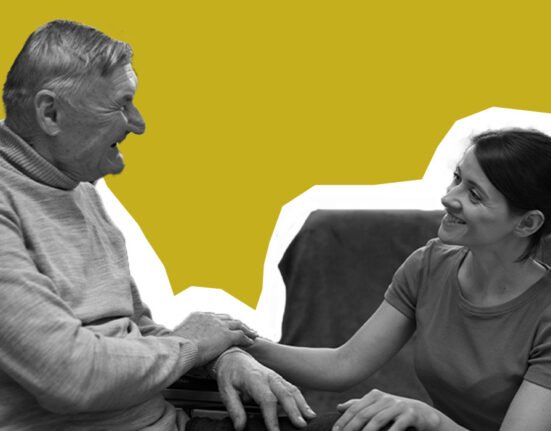Self-injury/ Self-harm, “Deliberate Self Harm” or “Non-suicidal self injury” refers to the act of causing injury, not amounting to suicide, on oneself. It can be revolting to many people, as the idea of injuring oneself goes against the concept of “self preservation”, which most individuals understand and a person who self-harms is viewed at best with pity or worse…….with contempt.
Society feeds on images of beauty and success and this act, of self mutilation is far removed from that. This is not what people can understand easily. After all, why would you scar your own body? Why would you hurt yourself?
So, who self harms?
While pretty much anyone might engage in self harm, research indicates that it is more common among teenagers and young adults (about 6-8% of people between the ages of 15 and 24 years engage in self harm in any 12 month period) as they navigate considerable strain regarding conformity, group acceptance, issues of bullying, sexuality as well as one’s academic and career choices and pressures. The incidence rate of persons who self harm is 250 per 100,000 per year in India. The number of females is slightly more than males (2:1 among adults or 3:1 among adolescents) depending on the sample taken.
Self harm is also associated with mental health conditions such as “Emotionally Unstable Personality Disorder”, “Depression”, “Anxiety Disorders”, Eating Disorders”, “Post-traumatic stress disorder” to name a few.
Types of self harm:
• Biting
• Cutting
• Pulling skin or hair
• Hitting
• Choking
• Scratching
• Burning
• Taking in harmful substances
Why self harm?
Strange as it sounds, “self harm” serves to soothe, calm, or even control seeming chaos, overwhelming distress, fear, rejection, abandonment etc. It is also unfortunately very addictive or habit forming.
Many people engage in self harm as a way to cope with unpleasant emotions, the physical pain serves as a way to divert from the intense emotional pain or forget temporarily a very bad memory “I can’t bear the pain in my heart, it’s too much…cutting hurts and then I only have to focus on the physical pain”. Some do it to influence people around them. It gets them help or the much needed warmth, attention and affection at least briefly. Several others do it to punish themselves “I wanted to punish myself” or as a way to punish others “Look what you made me do”.
It is used by some to numb oneself “I wanted to stop feeling” and by others to stop feeling numb/ even an adrenaline rush “I feel good, get an adrenaline rush, get excited”. While in the short term it serves to even deal with suicidal feelings, “I wanted to stop thinking about killing myself” in the long term, it might unfortunately increase the individual’s capacity to engage in progressively life threatening acts of self harm.
It is used by some to ward off unnecessary attention “I wanted to make my body ugly” or prevent harm to others “When I’m angry, I’d rather hurt myself. I don’t want to hurt somebody else”. For some people it gives them a feeling of strength “Not many people can do this, I can and do it properly too” and power “I have power over this situation”… the scars can even feel like battle wounds “I love my scars. I see them and I know why I made each cut”.
The scientific reasons suggest that there is a release of “endogenous opioids” which leads to a numbing or even mildly pleasurable feeling. This in turn might serve to deal with the emotional turmoil atleast in the short term.

Stigma and self harm:
Stigma is like a mark of shame on a person that results in the person being discriminated against or rejected by society. It is a prejudice or a strong negative attitude with which a person with mental illness is viewed.
It has significant repercussions, mainly in terms of affected people shying away from treatment as they don’t want to be labeled, diagnosed or seen as having a “mental health issue”.
So, how do they manage?
People mask their injuries by wearing full sleeve tops to cover cuts on their hands, pants instead of shorts to hide injuries on their thighs, turtle necks etc. Some even use elaborate tattoos and body art to mask their scars.
Who do they reach out to?
Attitudes of people around have a profound impact on whether people who self harm disclose and seek help or not. Unfortunately many people believe that self harm is done largely to garner attention or to manipulate people around them.
Young people who self harm often reach out to peers, who might be indulging in self harm themselves. This is due to the comfort of sharing with someone having a similar problem and therefore being better accepted. Unfortunately, some studies suggest that disclosure of self harm to a peer is associated with an increase in self harm in those peers. Alternatively other studies show that co-rumination with a peer can lead to a decrease in acts of self harm. Reaching out to an adult is associated with better coping skills.
Attitudes of people:
Lay public
How does the general public perceive people who self harm? It can moderate and even worsen the emotional problems that led to self harm in the first place and influence help seeking behaviours. Studies that have looked at public perception of self harm indicate that self injurers are perceived negatively. They are seen as “freaks” and “dangerous to be around”, from whom one has to distance from.
Men tended to have a more negative attitude towards those who self harm, than women. However, both men and women have been shown to display considerable negativity, towards males who self harm. This is because self harm is widely associated with women and help seeking is more in women than men. People who self harm are viewed as having a mental illness and seen as “dangerous” and more likely to act out or be violent towards people around them. Men who self harm will thus be perceived as being more dangerous as compared to women. Self harm is also not seen as a genuine suicide attempt by the public and is often seen as a mere act to get attention. These people are viewed as manipulators. All of these prejudices lead to the social distancing.
.jpg)
Unfortunately, this stigmatization and the resulting isolation further leads to more acts of self harm. Having secure and stable social networks helps to navigate this difficulty better.
Medical people
Due to the shame and embarrassment and guilt, people who self harm rarely access help even when their injuries require medical attention. Studies that have looked at the attitudes of medical personnel towards those who self harm indicate that medical personnel who attend to such patients, very often display considerable negative feelings, pessimism as well as lesser willingness to help.
The patients who report to emergency services are often ignored, made to wait for long, and are subject to negative comments (“Why do you do it in the first place”?
“What is wrong with you”?) as well as receive painful treatment (“they are ok with pain right?…then why bother making it painless for them). They are perceived as being “time wasters”, and so emergency staff end up attending to what they see as deserving and “genuine cases”. Studies show that in general hospital settings, the attitudes are very often negative even from doctors, especially towards those who are seen to self harm repeatedly.
However not all attitudes are negative. There is understanding, empathy and genuine care shown by qualified professionals who work in the area of mental health. This suggests that with training and knowledge on how to help these patients, attitude is less likely to be negative. Alternatively, when staff is ill equipped to deal with those who self harm, the attitude and related care behaviours are more negative.
This suggests that the need of the hour is to sensitize “emergency staff” to be understanding and non-judgmental towards those who self-harm. This is pertinent as people access emergency services to attend to deep injuries. While attending to the injuries, showing compassion as well as ensuring they get the right help (accessing mental health services) is necessary.
People engage in self harm more so from a feeling of helplessness and not knowing how to cope better. Self harm is rarely about “attention seeking”, as it is most often carried out in secrecy. These people feel considerable shame and guilt over what they have done. Prejudices and stigma only serve to exacerbate the problem. They need our understanding and help, not condemnation.












Leave feedback about this